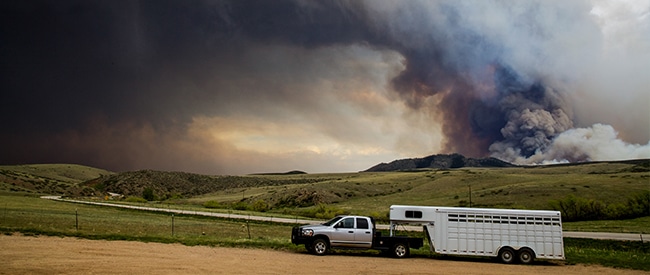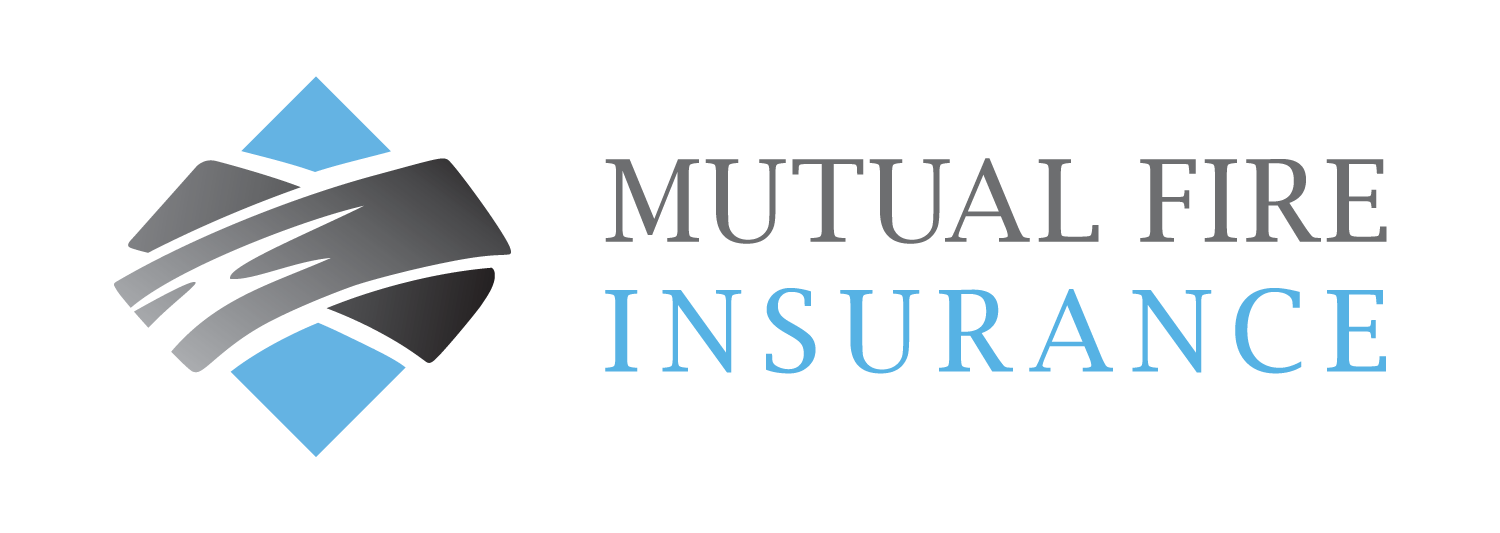Loss Prevention: Farm and Ranch Wildfire Preparedness

As the summer season heats up, wildfires become a concern because warmer and drier weather across Canada creates ideal fuel conditions for a blaze. Though wildfires are part of nature’s process, they are not always in the wilderness far from human activity, some fires do pose a significant risk to towns (also called interface fires) and cause a concern when they impact human activity and infrastructure.
Many informative resources are available to help farmers understand and prepare for the risk of wildfire. Below we detail a summary of common best practices for farm and ranch wildfire preparedness with accompanying links leading to more information.
Fire Safety
Many fires in wooded and rural areas start because of human activity. Actions like tossing a cigarette butt on the side of a dry highway or throwing away glass bottles that can magnify the sun’s rays or creating a spark from operating an all-terrain vehicle can easily start small brush fires that, under the right conditions, grow into dangerous fires.
For farmers, some fire risk is inherent in their operations. Practicing fire safety for all jobs on the farm will help keep your buildings and livestock safe and reduce the risk of starting a fire on your farm.
Open Burning
There are usually strict guidelines in provinces and municipalities for burning debris on the farm. Typically, you must apply for a permit but there may be some parts of the year where the fire risk is extreme and open burning is not permitted at all. Some things to consider before burning:
- Wind conditions
- Temperature and humidity
- Recent weather conditions
- Time of day
- Time of year
- Fire danger rating
- Proximity to buildings
- Amount and type of debris to burn
- Capacity to put out the fire
Hay Baling
For many folks outside of the farm industry, it can be shocking to find out that hay can spontaneously combust! Baling hay is a critical task for many farmers. One of the most important factors to monitor before, during, and after baling is the moisture content of the hay. There is a delicate balance between dangerously high moisture content which creates conditions for fire and just the right moisture to retain good nutrition levels for livestock. Refer to the recommended moisture content for the type of bale you are creating i.e. round, square.
It is also good practice to store baled hay in multiple locations a fair distance from other buildings. Check hay regularly in the first 4 to 10 weeks after baling to ensure there are no signs of heating.
General Farm Activities
Some common farm jobs can create fires. Be aware of your activities, practice good maintenance, and have fire suppression equipment, like fire extinguishers, nearby.
- Welding creates sparks that can fly and set things around it on fire
- A machine fire in a dry field can spread to grasses nearby
- Spills from refilling a fuel tank can ignite
- Improperly stored chemicals and fertilizers can combust
- Sawdust and cobwebs around electrical panels can ignite
- Propane tanks and jerry cans with fuel can ignite
FireSmart Canada has a number of helpful recommendations to practice fire safety for farms and acreage.
Wildfire Protection
If a wildfire is burning in your area, it might not be the main fire that is a danger to your farm. Rather the hot embers blown ahead of the fire are likely culprits for igniting fuel on your property. Here are some helpful tips to improve the fire resistance for your home and farm buildings.
- Keep vegetation like decorative bushes and gardens manicured and healthy
- Avoid landscaping with bark mulch or pine needle mulch
- Prune trees so that there are no branches at the lower trunks
- Clear out fallen leaves and branches around your buildings and beyond to reduce possible fuels for the fire
- Choose metal or asphalt roofing rather than wood shingles
- Choose plants that retain a lot of moisture and ensure landscaping is not planted up against a building
Farm Evacuation Plan
The Government of Canada recommends families have a pre-planned evacuation route. Your emergency plan should also extend to include your farm employees (especially those who live on your property) as well as your livestock. Elements to consider are:
- Updating fire extinguishers regularly
- Make an agreement with a buddy farm in a separate area. If an emergency occurs, you can temporarily relocate to that location and vice-versa.
- Plans to lock up farm buildings quickly in the event you must evacuate.
- Have a map of your farm, note where fire suppression tools and emergency kits are stored.
- Vehicles to transport livestock
Refer to these provincial resources for great tips on farm and ranch wildfire preparedness:

